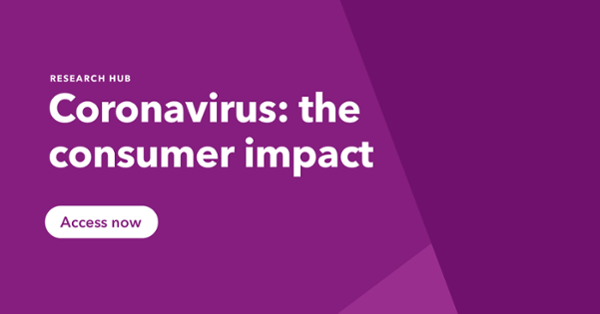Advertising plays a crucial role in our economy and wider society. It drives demand that sells products and services that create jobs. It builds brands that grow the intangible value of a business, driving higher profits and margins, enabling expansion and investment.
Crucially, especially right now, advertising revenues support our news industry and pay for the entertainment we enjoy every day.
In the current climate, these positive effects have never been more pressing. Job retention and creation, always important, today is critical.
We know from our ongoing research into the global impact of the coronavirus pandemic that 22% of people in the markets we surveyed have lost their job or been furloughed, and 24% have had their hours cut.
Unsurprisingly, demand for news has never been stronger, with 60% watching more.
Along with this, 40% are watching more broadcast TV while 52% are watching more shows via streaming services as our thirst for entertainment in lockdown soars.
Despite this, advertising revenues are dropping faster than ever recorded.
Warc and the Advertising Association have forecast TV advertising in the UK to drop an incredible 46% in Q2 and all forms of advertising to fall 19.7% across 2020, painting a picture that will be mirrored worldwide.
Sectors such as physical retail, travel and live events that drive large chunks of spend have disappeared. Product launches and sports events have been postponed. This is before we get to companies hoarding cash to shore up balance sheets. This is significantly worse than any of the GDP forecasts recently released, most of which indicate a drop of GDP up to 35% in Q2.
Overcoming concerns
For me, as a CEO with a customer base dominated by the marketing and advertising industry, I’m consistently fascinated by the insights we’re uncovering on consumer sentiment around advertising.
While there are obvious reasons to freeze or shift advertising spend – for example, if you’re experiencing wide-scale layoffs, or your sector has been shut down – however my feeling was the pulling of spend by large brand advertisers was driven in a large part by sentiment; it didn’t feel right to carry on as normal.
In times of uncertainty, often the safest reaction is to come to a halt.
I’ve found countless examples of advertisers pulling the breaks that seem to be sentiment-driven. One such example is Coca-Cola, which has slashed brand marketing. The move was announced with the following quote from the brand’s Chairman, which highlights that the motivation is based on a perception around consumer attitudes:
“We’re being … mindful about the right level of brand marketing and new product launches given the consumer mindset across markets.”
How consumers really feel about advertising since the outbreak
In reality, our data paints a very different picture from what is largely assumed by the marketing industry.
Our research shows almost no consumer concern about brands advertising at this time.
To quantify this, I have excluded detractors from my analysis (strongly disapprove / disapprove) because for me, this is the question that matters: will the action of investing in advertising create a negative perception among current and future customers?
We know that in normal times, a large chunk of people remain impartial to advertising, so removing them now would not make sense.
On this measure:
85% of consumers either approve of, or are impartial to, carrying on as normal. Just 10% somewhat disapprove and 5% strongly disapprove.

If we continue this approach and look at statements related to advertising approaches that reflect the current crisis, this aggregated number rises to 96% in favor of advertising that “provides practical information” and 94% in favor of those delivering “funny / light-hearted content”.
In all cases, there are almost no detractors.
While it may feel trivial to focus on making people laugh right now, clearly in the minds of those in lockdown, this is not the case.

There’s also very little variation across markets and core segments. The range between countries is just 81% (South Africa) at the bottom, with 92% (Spain) at the top.
With the exception of people who live with roommates (perhaps not the happiest people right now) across demographics worldwide, there is very little variation, all scoring 85% to 90%.

Advertising for good
As a CEO, I fully understand there is sometimes a need to pull advertising.
If the reasons are rooted in a concern for the negative perception it would create with your audience, this for me is unfounded.
From my perspective, if you’ve spent decades building a brand, switching it off now, with arguably the most engaged audience in history, is a short-sighted decision that could erode decades of hard-won brand equity.
Also, if we consider the fact that for many big-ticket items, sales cycles can last upwards of 12 months, cutting off advertising now could limit demand as things inevitably return to normal.
While many major purchase decisions are of course being delayed, our data shows this will start returning;
46% say they will make purchases again once the outbreak decreases. Top of the list are vacations, clothes and smartphones.
Connecting with this highly-engaged audience, supporting the marketing industry, and delivering the revenues that publishers need to survive, are wins for everyone.
Advertising is a vital component of a functioning economy, and “normal” is something we all need more of right now.
I stand by this for GWI. We’ve continued our marketing efforts as normal, but have endeavored to offer our audience more valuable, informative and supportive content.
As a business owner, I have a responsibility to my teams and customers to keep bringing in new customers, and despite the world we’re living in right now, it’s crucial to remember – this too shall pass.



